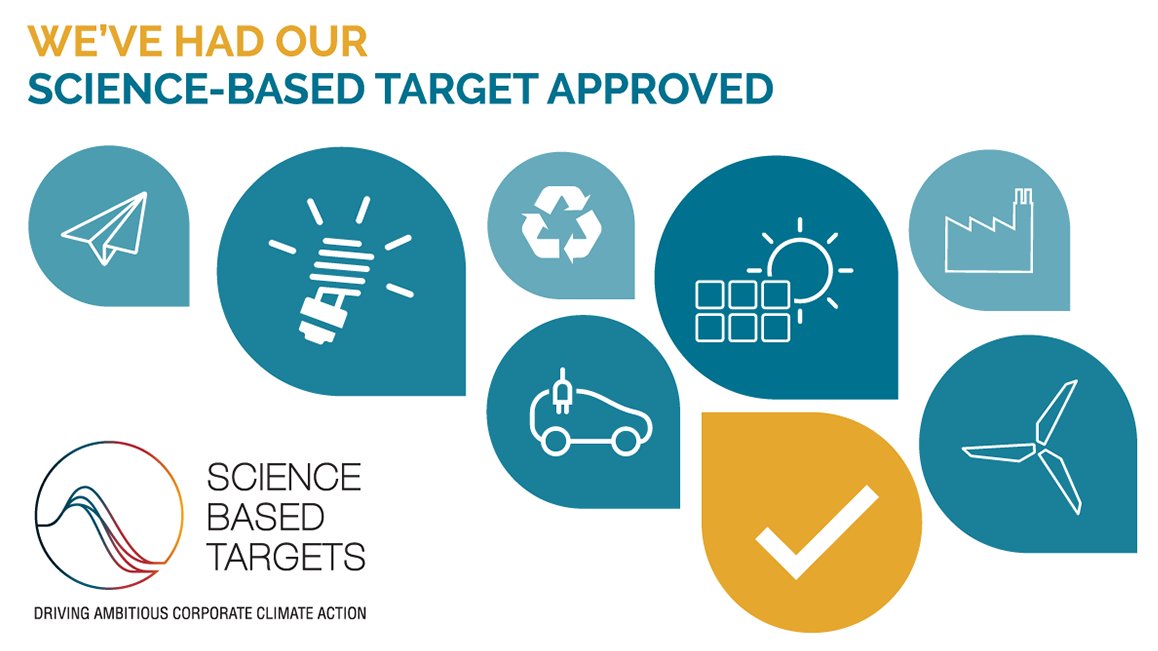Protection of the environment and climate is an important part of HUGO BOSS' commitment to sustainability. By signing the United Nations Fashion Industry Charter for Climate Action in 2018, we made a commitment to the vision of a climate-neutral fashion industry by 2050. In response, in 2020, we have set ourselves science-based targets in order to play our part in preventing the worst impacts of climate change. Our science-based targets were officially approved by the Science Based Targets initiative (SBTi) at the end of June. They thus meet the highest standards and underline the credibility of our approach to sustainability management.
Ambitious targets to reduce global warming
SBTi provides companies with methods to set scientifically based emissions-reduction targets. Reduction targets that meet SBTi's criteria will help to limit global warming to well-below 2°C and in the best case to 1.5°C, in line with the Paris Agreement, provided all companies worldwide that emit emissions also set themselves such ambitious targets. The criteria takes particular account of the various stages in the value chain of a company. Separate targets are defined for so-called scope 1 and 2 emissions, which the company can influence directly, and scope 3 emissions, which occur in the upstream and downstream value chain and are therefore more difficult to control.*
In accordance with SBTi criteria, HUGO BOSS has set itself the goal of reducing scope 1 and 2 emissions by at least 51% by 2030 compared to the year 2018. This goal corresponds to the most ambitious category of science-based targets and contributes to limiting global warming caused by HUGO BOSS' own CO2 emissions to 1.5°C.
We have now also set a concrete target for our scope 3 emissions for the first time. This is a clear commitment not only to work on changes in our own company, but to help change the entire fashion industry: by 2030, our scope 3 emissions are to be reduced by 30% compared to 2018. With our scope 3 target, we are contributing to limiting global warming to well below 2°C.
Reaching the goals through concrete measures
In order to achieve our ambitious goals, we rely on environmentally and climate-friendly processes and take the necessary measures. At our own locations, for example, we obtain energy from renewable sources wherever possible and also generate energy with our own photovoltaic systems. We also pay attention to climate protection when purchasing our raw materials. By 2025, for instance, we will only use cotton from sustainable sources. The implementation of these targets is also primarily dependent on various forms of cooperation with sustainable initiatives, such as with the United Nations Framework Convention on Climate Change mentioned above.
Further information on the Science Based Targets initiative (SBTi)
The Science Based Targets initiative (SBTi) is a collaboration between CDP, the United Nations Global Compact, World Resources Institute (WRI) and the World Wide Fund for Nature (WWF) that defines and promotes best practice in science-based target setting and independently assesses companies’ targets.
* Scope 1 and 2 emissions are direct and indirect emissions that originate from or are controlled by a company's own sources, such as fuel combustion or electricity. Scope 3 emissions are upstream and downstream indirect emissions that occur in the value chain. They relate to the production of raw materials, manufacturing processes and logistics.
